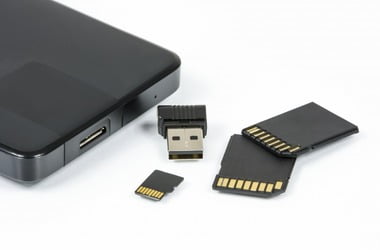
Is your external hard drive slow to open files? You click to open, and it takes forever just to see what’s inside. Even trying to open a document, image or video in the drive takes ages.
Don’t worry.
This guide will answer the question, “Why is my external drive slow?” and also show you what to do when your external hard drive takes too long to load.
1. Scan Your External Hard Drive for Viruses
A virus can make your external hard drive slow to open files. That’s a danger sign you need to control before things get worse. With time, it might damage your data and even ruin your hard drive.
Therefore, scan for viruses and eliminate the threat as fast as possible.
Several options exist to achieve that goal:
-
- Inbuilt Windows Defender can work, although it may not have all the necessary functionalities of a robust antivirus program.
- A powerful antimalware program like Auslogics Anti-Malware can effectively scan for and eliminate the threat.
- If you have some technical know-how, you can eliminate the threat using the Command Prompt. Just run Command Prompt with Administrator privileges, then type attrib g:*.* /d /s -h -r –s. (Replace letter ‘g’ with your external hard drive’s letter.) Then press Enter.
Once you have scanned for viruses and cleaned your external hard drive, your hardware and files will be safe from harm. And you’ll no longer have the slow file opening issue.
2. Defragment/ Optimize Your Disk
Another reason for your external hard disk taking so long to open files could be fragmentation. That means files that are supposed to be together are scattered all over the drive. Hence, it takes longer to locate and display them.
Once you defragment your external hard disk (“defrag drive”, shortly), you’ll be amazed at how fast your files open.
Follow these steps to do it:
- Open ‘My Computer’ or ‘This PC’ (varies between Windows 7, 8, and 10).
- Right-click the external hard disk. Select Properties.
- Click the ‘Tools’ tab on the Properties dialog box.
- Click the ‘Optimize’ or ‘Defragment’ button (varies between Windows 7, 8, and 10).
- Click the ‘Analyze Disk’ button to see the extent of disk fragmentation.
- Click the ‘Defragment Disk’ or ‘Optimize Disk’ button (varies between Windows 7, 8, and 10).
- Wait until the process is complete before you do any operation on the hard disk.
Note that file fragments can remain on your external hard drive after defragmentation. That’s a normal thing. So, don’t run the process over and over to get the perfect defragmentation. Once is enough.
However, you can defragment your external hard disk regularly, since fragmentation can occur while you use it.
3. Disk Cleanup
Don’t just stop at defragmenting your disk. Also, perform disk cleanup. Disk cleanup removes unnecessary files, which only take up space on your hardware and clog up your system. Removing them will ensure efficient disk operation. Doing it every month is necessary to ensure fast file opening when using your external hard drive.
What type of files will disk cleanup remove? Files that you don’t need: the recycle bin files, temporary files and thumbnails.
The process is pretty simple:
- Go to the Windows Start menu.
- Locate and click on Programs.
- Click to open Accessories.
- Now, click to open System Tools.
- Select Disk Cleanup.
Once this is done, your external hard drive should be super fast.
4. Other Solutions
If you still have delays when opening files, you can consider hardware issues.
Try these options:
- Change your SATA cable.
- Use a faster USB 3.0 port instead of a USB 2.0 port.
- Get the hard drive repaired.
With this variety, one solution is sure to work on your external hard drive.






 Done! Great to see you among our subscribers!
Done! Great to see you among our subscribers!